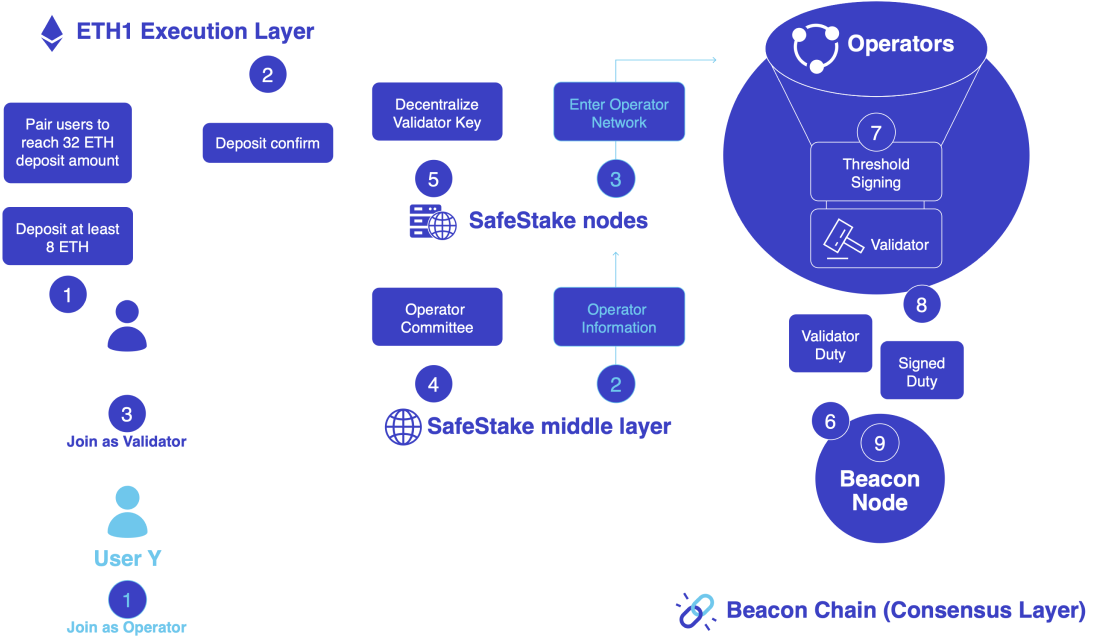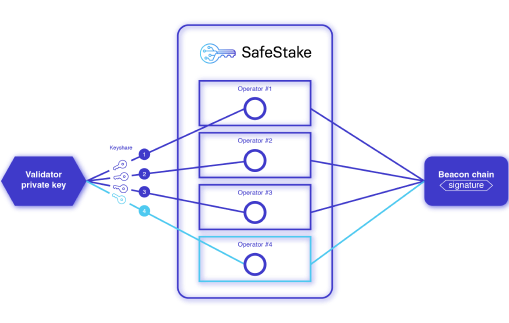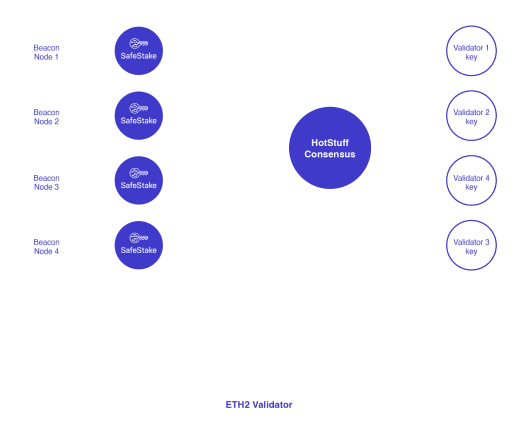
What is SafeStake?
SafeStake is a decentralized staking infra and protocol that helps maximize staker rewards by keeping validators secure and online to perform Ethereum staking duties.
SafeStake is a turnkey DVT (Distributed Validator Technology) staking solution that splits a validator key into shares, then distributes them to several nodes to achieve high levels of security and fault tolerance. Written in Rust, SafeStake runs on top of the ETH2/consensus client Lighthouse and uses Hotstuff, a superior consensus library to iBFT and qBFT.
Why SafeStake?
Security always comes first. Rust is king in preventing memory-related bugs and vulnerabilities, always beats Go in runtime benchmarks.

Superior Slashing
Protection
HotStuff, the first partially-synchronous BFT replication protocol, is more robust than iBFT or qBFT. It helps ensure consensus is reached and minimizes the chances of slashing for validators on the SafeStake network.

Low 8 ETH Staking
Threshold
In Stage 2, we will lower the ETH 2.0 staking threshold to 8 ETH. Our goal is to establish a more extensive validator base, improve diversity and decentralization, and strengthen the security of the Ethereum network.

Highly Scalable
SafeStake was engineered and developed to maximize the efficiency of operator nodes. Each of our nodes can handle up to 200 validators without sacrificing the node’s or associated validators’ performance.

More Secure
Our engineers are writing a proprietary DKG protocol to handle the issue of a ‘trusted’ dealer handling key generation. We are eliminating all potential security threats as part of our protocol, not as an add-on solution.

SafeStake network participants

Validators
Stage 1 — Users are required to stake 32 ETH to become a validator.
Stage 2 — Users are required to stake 8 ETH or more.
Operator nodes users select during validator setup perform attestation and block proposal duties on their behalf.

Operators
Operators maintain independent, trustless nodes and hold stakers’ validator key shares. Stakers pay operators a service fee for providing a turnkey solution for professional ETH 2.0 staking services. Operators can join/leave the SafeStake network at will.

ParaState DAO
The ParaState DAO is the decentralized organization that built the protocol and maintains the network, along with Verified Operators. The DAO is also responsible for governing the SafeStake network. To join the DAO, users most own $STATE tokens and a special NFT.
The SafeStake Design


A non-custodial ETH 2.0 staking solution utilizing DVT for the ultimate in reliability, security, performance and scalability


The Ultimate in Slashing Protection, Security, Fault Tolerance and Online Uptime Performance













